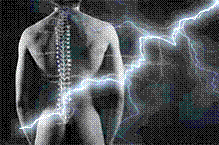 Beside the apparent consequences after SCI as loss of motor, sensory and autonomic functions, pain is often rated by patients as one of their major problems. The prevalence of pain in SCI patients is approximately 69%, and one-third rate their pain as severe. It was therefore consequential to incorporate a pain assessment into the EM-SCI: First to have a long term follow up on pain after SCI to improve prediction of chronification and second to have a database for novel therapeutically interventions.
Beside the apparent consequences after SCI as loss of motor, sensory and autonomic functions, pain is often rated by patients as one of their major problems. The prevalence of pain in SCI patients is approximately 69%, and one-third rate their pain as severe. It was therefore consequential to incorporate a pain assessment into the EM-SCI: First to have a long term follow up on pain after SCI to improve prediction of chronification and second to have a database for novel therapeutically interventions.
A screening tool for pain after spinal cord injury was developed. The pain questionnaire, conceived as a structured interview, examined various aspects of pain as well as pain associated psychosocial factors. Most important, it must assess pain syndromes to finally classify pain types according to the International Association for the Study of Pain (IASP, 2001). Based on this taxonomy, SCI pain can be grouped into a nociceptive and a neuropathic pain type. Within these groups, it can be further divided into subtypes (e.g. musculoskeletal or visceral pain, either at or below the lesion).
The questionnaire itself takes approx. 15 minutes to complete. I, depressive symptoms will be assessed by the Beck Depression Inventory (BDI II).
Proposed classification of pain related to spinal cord injury
|
Broad type |
Broad system |
Specific structures / pathology |
|
Nociceptive |
Musculoskeletal |
Bone, joint, muscle trauma or inflammation |
|
|
Visceral |
Renal calculus, bowel, or sphincter dysfunction, etc. |
|
Neuropathic |
Above level |
Compressive mononeuropathies |
|
|
At level |
Nerve root compression (including cauda equina) |
|
|
Below level |
Spinal cord trauma / ischemia (central dysesthesia |
(adapted from IASP Taskforce on SCI Pain)

